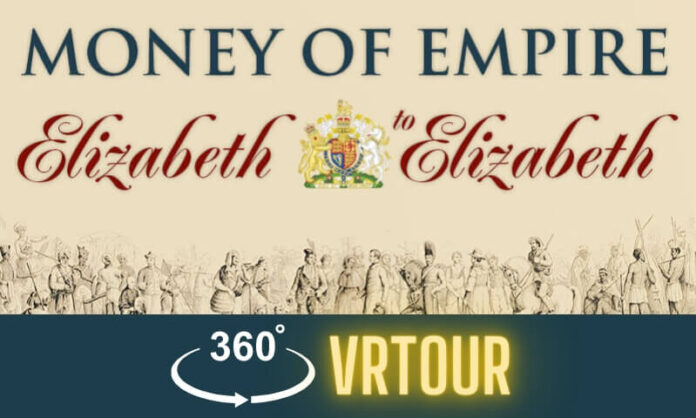Museum enthusiasts, history aficionados and coin collectors can explore the American Numismatic Association’s Money Museum exhibit, “Money of Empire: Elizabeth to Elizabeth,” in a new 360-degree virtual reality tour that can be viewed from a computer or a VR headset. Visitors can experience close-up images of many of the exhibit’s objects, allowing views from both sides of the pieces on display and details that are not visible in person.
“Money of Empire,” uses money and medals to illustrate the development of the British Empire from its beginnings under Elizabeth I (1558-1603) to the present day. The British Empire, more than any other, set the stage for the modern world in which we live. From small origins during the late 16th century, the Empire expanded to become the largest empire in history and the most powerful global economic and military power for over a century.
The Money Museum also is home to the Harry W. Bass Jr. Collection, one of the greatest U.S. gold coin collections ever assembled. The Bass holdings feature the only complete collection of $3 gold pieces, a complete collection of early U.S. gold coin types of all designs from 1795 to 1933 and more.
The evolution of money through time can be seen in the museum’s “History of Money” exhibit as well. Beginning in Mesopotamia and Egypt around 4,500 years ago, gold and silver began to be traded in the form of metal bars or bits of wire. Since then, money has been exchanged in the form of coins, paper money, tokens, emergency money and more.
Other virtual exhibits at the museum feature the 1943 and 1944 cents, the King of U.S. Coins, the “Nickel that Never Was,” and the first coinage of the United States Mint.
Click here to access “Money of Empire: Elizabeth to Elizabeth”.
For more information, visit the ANA’s website.
If you want to learn more about numismatics online, you should definitely have a look at the ANA eLearning Academy!
Are you interested in online exhibitions exploring exciting historical periods? In that case, you might want to check out the “Barbarian Tsunami” exhibition of the National Museum in Szczecin and the University of Warsaw dedicated to the Migration Period.




